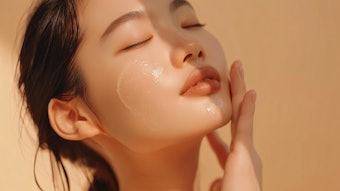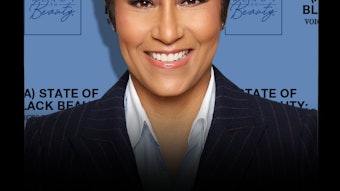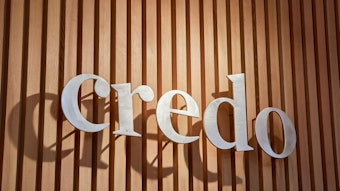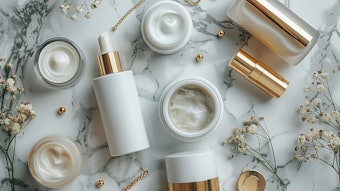Effective marketing for things that you can see is easy. It’s what you can’t see that can be tough.
For beauty brands, the most common marketing challenge is communicating what the product does, whom it is for and why it works. Yet, what makes beauty products so effective is the technology behind them—but in marketing, the important technology stories are underplayed and often quite complex for consumers to easily grasp.
Truly smart, current brands can make their packaging, ads, websites and social media work well for them when they know how to “talk tech” effectively. And effective marketing connects fans to brands and turns interests into sales.
While some brands can accomplish this, the reality is that most brands drone on and on about their products in the least effective ways. Perhaps their techniques worked at some point in time, but today’s consumer is smarter, more brand-aware and has access to more options than ever before. Simply put, few people have time to decipher all the complex stories that are out there.
Show Me, Don’t Tell Me
Best moisturizer! Age-defying serum! New & Improved Detangling Formulation!
We see these claims all the time and have become desensitized to reading hyperbolic claims about efficacy. While such claims are fine to make, they hardly come across as meaningful points-of-difference. They run only skin deep.
Getting a consumer to read your marketing is more difficult than ever, and words alone cannot be relied on to do all the heavy lifting. Brands need to be more innovative in carving out a distinctive voice in the marketplace. Without a distinct voice, brands face a race to the bottom—a losing race, competing on price alone.
So how do you cut through the clutter?
Think Like a Consumer, Not a Manufacturer
Brands often want to focus on the tech stories meaningful to them; not the ones consumers necessarily want to hear. It’s a common mistake that often results in complex, dry and overly clinical stories that rarely spark an emotional connection.
The cycle can be broken when the marketing team gets out of the R&D lab or off the factory floor and spends more time getting to know the target customer. What are her needs? Where does she shop? What stories will really connect with her?
Answers to these questions will unlock a brand’s unique DNA, allowing tech stories to become meaningful ones to the target consumers.
Four Visual Strategies to Consider When Talking Tech
So what are the best methods to communicate these stories? From our experience at MSLK working with a variety of beauty brands, we’ve identified four effective visual strategies to help communicate technology:
1. Icons: Icons are symbols that communicate a single idea clearly and universally. Rarely are they meant to be the main focus; their role is to help consumers quickly scan and decode meaning. Whether literal (an image of a molecule) or metaphorical (a thunderbolt), icons can act as an at-a-glance shorthand for words.
Icons can be used in any context—from online to print, in ads, and on the front and back of packaging.
2. Infographics: Infographics can take many forms. They could be as simple as a statistical chart or a highly detailed illustration that reveals a complex process.
Ideally, infographics act as engaging visuals whose beauty draws people in and keeps their attention by being informational. They are best employed on packaging backs, when words alone cannot provide clarity. Online, infographics generally warrant a dedicated section to allow the story to take center stage, although they could function as a main image on the home page, if simple enough.
3. The Hero (or “If You Got It, Flaunt It!”): Key ingredients can often carry the whole story. For some brands, their product offering and brand architecture may already dictate that the ingredients are closely tied to the entire brand story, and everything is organized by ingredient—the Yes To brand is a good example. In cases where the ingredient is integral to the product’s efficacy (rather than merely as a scent), highlighting it above all else may just be the most effective route.
This technique works best when you’re introducing something truly new and disruptive to the market. If this is the case, the best thing to do is to show your ingredient clearly and downplay the other elements. Knowing when your story is simple enough— and interesting enough—to be the hero is predicated on your knowledge of your competitive landscape.
4. Metaphors and Similes: When writing about love, short poems rich with imagery can be more effective than long, descriptive prose-heavy letters. Similarly, some concepts that are difficult to grasp may be best explained through the use of metaphors and similes: Feather-soft, Sunlike radiance, Fountain of Youth serum.
Metaphorical phrases or imagery may not instantly describe a product, but can help to communicate a key benefit very effectively. When brands tap into unique metaphors, they should create an emotional connection with the customer.
Most effective in promotional material, metaphors allow you to create a fanciful vision of your tech story and make emotional connections. Bringing in familiar concepts from outside your industry can help tell your tech stories easily, helping simplify the complexities and better communicate key benefits to your audience.
So What’s Your Story?
Whichever method you choose depends on your brand architecture and voice.
What role does technology play in your brand? Are you truly connecting with your consumers? Are you seizing every opportunity to create meaningful, emotional connections?
These are tall orders for any brand, yet essential questions to be constantly addressed. Gone are the days of push marketing and reliance on words alone to tell your stories. If you seek to have a greater connection with your consumer, try one of the four techniques detailed here and see if you’re able to make a better connection. You might just find that talking tech allows your brand to speak for itself.
Marc S Levitt is the co-founder and creative director of MSLK, a marketing and design agency based in New York. MSLK specializes in helping beauty brands find their voice in today’s crowded marketplace through 360-degree brand positioning—from overall brand strategy to brand identity, packaging, retail experience, websites and social media campaigns. [email protected], www.mslk.com










